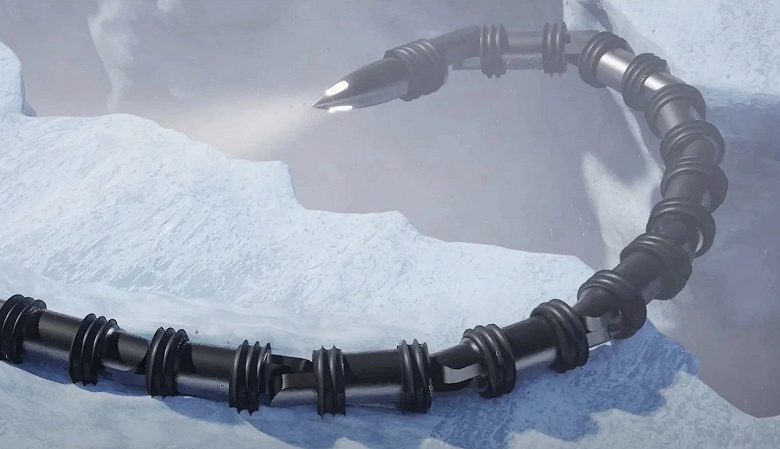New concept for a potential mission to explore the astrobiological potential of the Solar System
Scientists from NASA's Jet Propulsion Laboratory (JPL) have unveiled a new robot capable of exploring Saturn's icy moon — Enceladus. The main task of the robot, called Exobiology Extant Life Surveyor (EELS), is to search for possible signs of extraterrestrial life in the ocean hidden under the icy surface of the satellite.
During the Saturn exploration mission, Cassini Enceladus was discovered to be spewing huge plumes of water into space. This confirmed scientists' assumptions about the existence of an ocean under the icy crust of the satellite. This fact aroused the interest of the scientific community and inspired the development of various conceptual missions to study the satellite. Among the most promising missions — flying the probe through the plumes and collecting emission samples for delivery to Earth. However, NASA does not currently have missions of this type on its schedule.
Another promising concept was to send robotic probes to Enceladus to directly explore the ocean. Although the likelihood of obtaining positive results is much higher than that of a flyby mission, numerous difficulties, including drilling through the ice to reach the ocean, have made such a mission unfeasible at this time.
A team of scientists from NASA JPL decided to overcome these difficulties and developed the snake-like robot EELS. Its peculiarity is its ability to penetrate thermal vents on the surface of Enceladus and move along the icy surface, instead of drilling into it. This approach will allow the robot to bypass the problems associated with drilling through ice and collect valuable data for the search for potential life.
The EELS robot is 4 meters long and consists of 10 separate segments that provide it with flexibility and maneuverability. In his «head» cameras and sensors are installed to collect information. The robot is capable of operating autonomously in conditions of deep immersion under the icy surface, which will avoid problems with communication and transmission of commands to the mission control center.
To test the functionality and effectiveness of the robot, the EELS team conducted successful tests on the icy surface of the Athabasca Glacier in Canada, as well as in sandy conditions. Tests showed that the robot showed excellent maneuverability and was able to function successfully in all conditions.
Currently there is no exact timeline for such a mission that will send EELS to Enceladus. However, scientists from the EELS team are confident that their development is a key step towards realizing the mission of exploring the ocean of Saturn's moon. The enthusiasm of scientists to explore the astrobiological potential of the oceans of the Solar System makes this potentially feasible.

